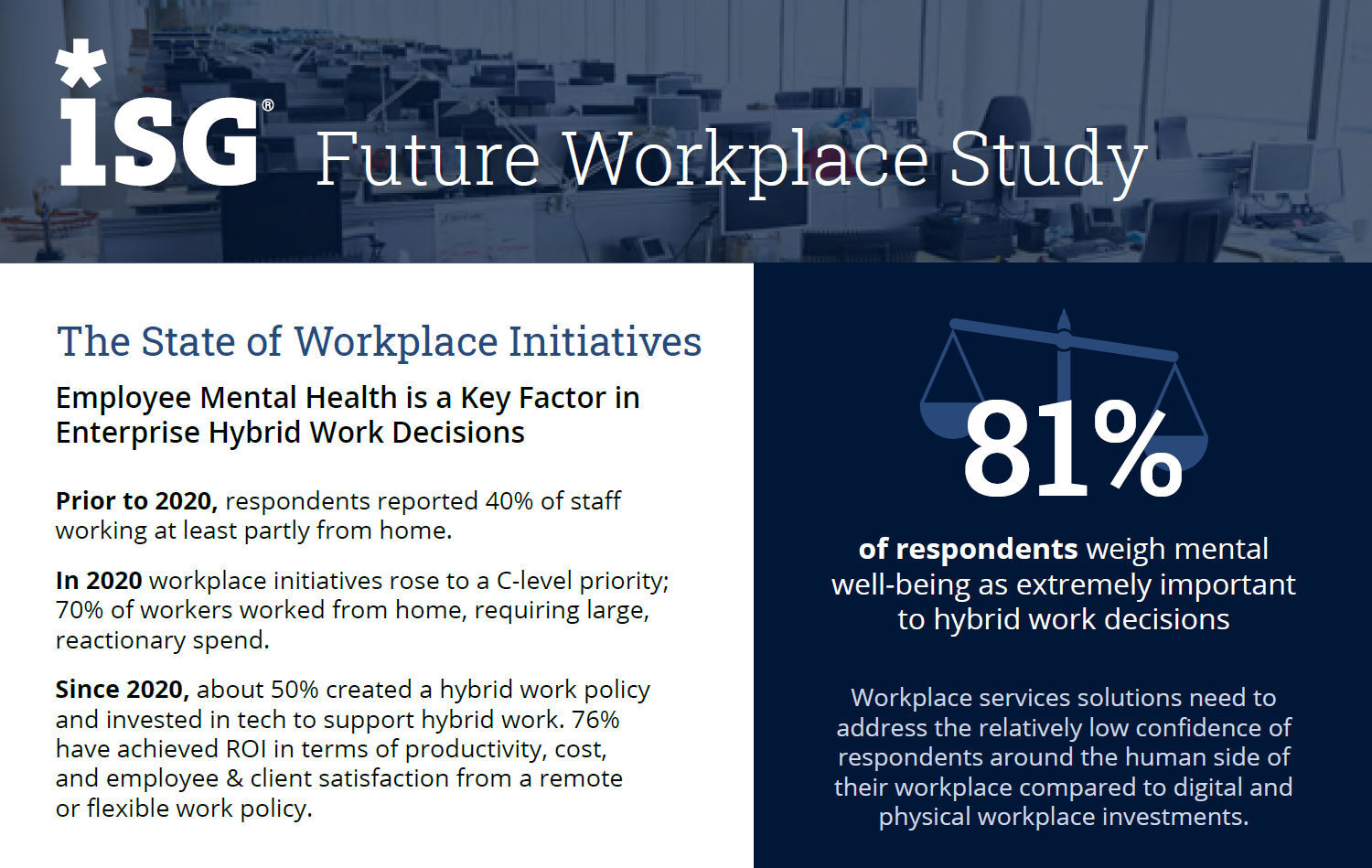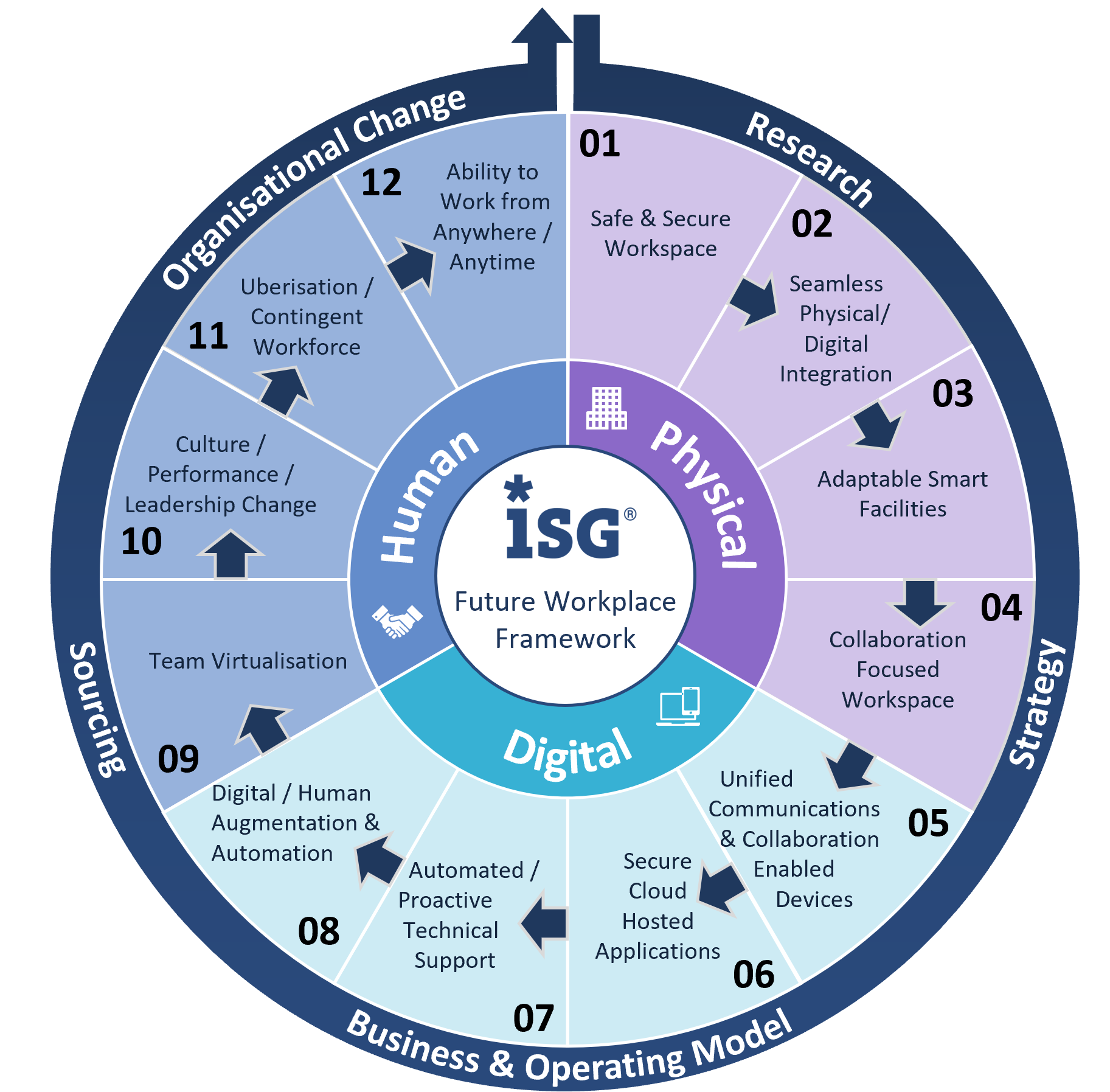The Secret to Elevating the Hybrid Work Employee Experience
Discover how to elevate the hybrid work employee experience by transforming traditional onboarding into meaningful interactions.



COVID-19 forced new ways of working, whether we were ready or not. As workers head back to the office, the workplace must adapt. Smart facilities, connected employees, AI and augmented capabilities will drive a healthier and "lower touch" office. The workforce of the future will be highly digital -- gig workers, remote collaborative workers, office-based workers -- all need to connect to customers and to each other. Capacity planning and management are key factors.

ISG's recent study shows employee mental health is a key factor in enterprise hybrid work decisions.
Learn how to adapt to constantly changing business conditions through operational resilience and agility.
Discover how to take today’s challenges as opportunities to provide a better workplace experience backed by innovative technologies.

ISG is a leader in proprietary research, advisory consulting and executive event services focused on market trends and disruptive technologies.
Get the insight and guidance you need to accelerate growth and create more value.
Learn MoreThe digital workplace software market has undergone a significant transformation since FY24, driven by the convergence of hybrid work models, AI innovation and heightened expectations for EX. The post-pandemic normalization of remote and hybrid work has solidified the need for robust digital workplace infrastructures that support productivity, collaboration and security across distributed environments.
In 2024, GenAI was a promising disruptor. In 2025, it is a foundational capability. U.S. enterprises are no longer piloting GenAI. They are embedding it across workplace services, from AI copilots and agentic automation to predictive analytics and immersive collaboration. According to ISG’s analysis of public research, over 75 percent of large enterprises use GenAI in at least one business function, with workplace services among the most active domains.
In 2025, the U.S. public sector — especially state, local and education (SLED) organizations is undergoing a profound transformation in how digital workplace services are conceived, procured and implemented.
Our 2025 research divides the workforce-management landscape into five focused guides—WFM Basics, WFM Suites, WFM for Healthcare, WFM for Manufacturing and WFM for Retail. Each report applies a common evaluation lens yet weights criteria to reflect the operational realities, compliance pressures and innovation priorities unique to its scope. Together, they provide a panoramic view of the market and a set of targeted benchmarks that let buyers zero in on the capabilities—and partners—best aligned to their context.
By the late 2020s, Gen Alpha will move into the workforce, introducing a new dynamic. With the potential for up to five or six generations in the workplace, enterprises are often challenged to understand how to bridge the generation gap and create a cohesive workforce. The answer can be found within your technology stack.
Companies with cloud-based contact centers quickly implemented a work-from-home setup with minimal disruption when the pandemic hit. The benefits of remote work have been on display ever since. The ISG Provider Lens™ Contact Center as a Service Global 2020 report explores how accelerating your contact center’s move to cloud can bring with it new personalization and workforce management capabilities.
Organizations must continue to adapt using automation, collaboration tools and optimal office environments to ensure they can make the most of their greatest asset – their people.

